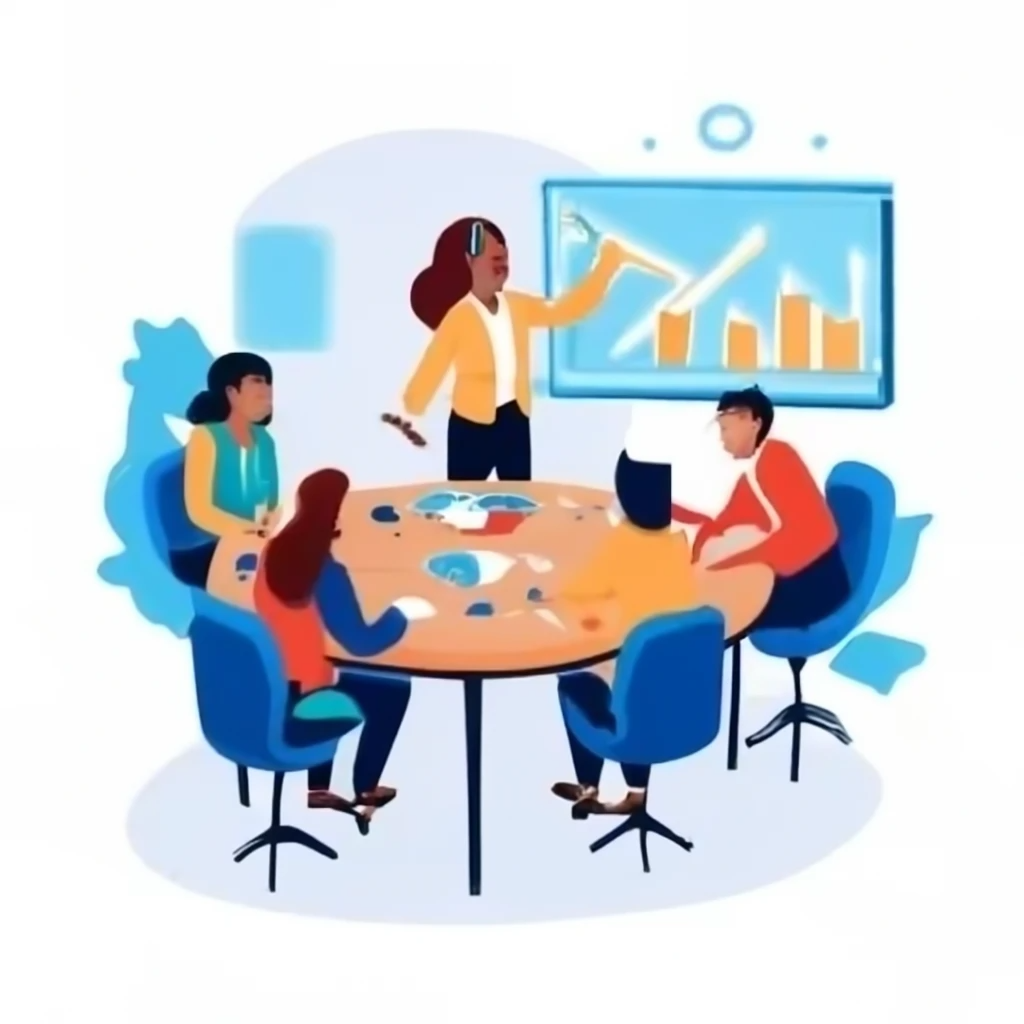
Networking is one of the most valuable aspects of attending offline business conferences. It allows you to build relationships with potential clients, partners, investors, and industry leaders. However, simply attending a conference and hoping for the best is not enough. To maximize the value of the event, you need a well-thought-out networking strategy. In this article, we’ll explore how to create an effective networking plan and ensure you make meaningful connections that will benefit your business in the long run.
1. Define Your Networking Goals
Before you even step foot in the conference venue, it’s crucial to define your networking objectives. This will help you stay focused and make intentional connections that align with your business goals. Consider the following:
- Who do you want to meet? Are you looking for potential clients, partners, suppliers, or investors? Understanding your target audience will guide your approach and help you identify the right people to connect with.
- What do you want to achieve? Do you want to gather information, form partnerships, or learn about new business opportunities? Be clear about your intentions so that you can tailor your approach accordingly.
- How many connections do you want to make? While it’s important to focus on quality over quantity, setting a goal for the number of people you want to meet can help you stay motivated and focused during the conference.
Having clear networking goals will ensure that you make the most of your time at the event.
2. Prepare Your Elevator Pitch
Your elevator pitch is a brief, compelling summary of who you are, what your business does, and why someone should care. It should be short, ideally no more than 30 seconds, and tailored to your audience. Here’s how to perfect your pitch:
- Be Concise: Focus on delivering the key points of what your business offers. Avoid using jargon or technical terms that may confuse your listener.
- Highlight the Value: Explain how your product or service solves a problem or adds value to your target audience.
- Make It Memorable: Leave a lasting impression by sharing a unique aspect of your business or a specific achievement that sets you apart from competitors.
Having a strong elevator pitch ready ensures that you can make a quick and impactful introduction to anyone you meet at the conference.
3. Research the Attendees and Speakers
One of the best ways to maximize your networking efforts is to research who will be attending the conference. Most conferences provide a list of speakers, exhibitors, and even attendees. By reviewing this information beforehand, you can pinpoint key individuals to approach.
- Speakers and Panelists: Identify the speakers whose presentations are most relevant to your business. This gives you an opportunity to approach them after their talks and initiate meaningful conversations about topics that align with your business interests.
- Exhibitors: Conferences often have an exhibition area where businesses showcase their products or services. Take note of the exhibitors whose offerings complement your business needs and make plans to visit their booths.
- Other Attendees: Some conferences offer networking tools or apps that allow you to see who else is attending. Use this tool to identify potential connections and reach out to set up meetings or introductions in advance.
Being proactive in your research helps you make informed decisions about who to approach and maximizes your chances of forming valuable relationships.
4. Use Social Media to Your Advantage
Social media can be a powerful tool for networking before, during, and after the conference. Here’s how to leverage it:
- Engage with the Event Hashtags: Most conferences have official hashtags that participants use to share updates, key takeaways, and photos. Follow these hashtags to stay up-to-date on the event and engage with others who are using the same hashtag.
- Pre-Conference Networking: Use LinkedIn and Twitter to reach out to attendees and speakers before the conference. Introduce yourself and express your interest in connecting at the event. You can even schedule meetings in advance to make sure you don’t miss out on key networking opportunities.
- Share Your Own Content: Share live updates and insights from the conference on your social media accounts. This not only positions you as an active participant but also attracts others to connect with you.
By using social media strategically, you can expand your reach and increase your visibility at the conference.
5. Make the Most of Networking Sessions and Breaks
Networking isn’t just about meeting people during formal sessions; it’s also about engaging during the less structured moments. Use the following tips to make the most of networking breaks:
- Attend Networking Events: Many conferences host networking events, such as cocktail hours, luncheons, or informal meetups. These are great opportunities to connect with other attendees in a more relaxed setting. Be sure to attend and prepare to introduce yourself.
- Engage During Breaks: Coffee breaks, lunches, and other casual moments are perfect for informal networking. Approach individuals who are standing alone or in small groups and start a conversation.
- Be Approachable: Smile, make eye contact, and ask open-ended questions to initiate conversations. Show genuine interest in the people you meet, and they will be more likely to remember you.
These informal moments can lead to some of the most valuable connections at the conference.
6. Follow Up After the Conference
Networking doesn’t stop once the conference is over. Following up with the people you met is critical for maintaining and nurturing relationships. Here’s how to do it effectively:
- Send Personalized Emails: After the conference, take the time to send a personalized email to each person you connected with. Reference something specific from your conversation to jog their memory and show that you valued the interaction.
- Connect on LinkedIn: LinkedIn is the ideal platform for professional networking. Send connection requests to the people you met and include a message reminding them of your conversation.
- Maintain Regular Contact: Don’t let the relationship fizzle out after the first follow-up. Check in periodically with updates about your business or share interesting articles that may be relevant to them. Consistency is key to building lasting professional relationships.
A thoughtful follow-up shows that you are committed to staying connected and that you value the relationship you’ve begun to build.
7. Be Patient and Persistent
Networking takes time, and not every connection will immediately turn into a business opportunity. Be patient and persistent in your efforts. Focus on building genuine relationships, and trust that the opportunities will come over time.
- Be Open to Long-Term Relationships: Some connections may not result in immediate opportunities but could lead to something down the line. Stay open to nurturing long-term relationships that could benefit you and your business in the future.
- Don’t Be Discouraged by Rejection: Not every person you meet will be interested in your business, and that’s okay. Networking is about finding the right fit, and sometimes it takes time to discover the right partners or clients.
By remaining patient and persistent, you’ll eventually see the fruits of your networking efforts.
Conclusion
Building an effective networking strategy for offline business conferences is essential to making the most of your experience. By defining clear networking goals, preparing your elevator pitch, researching attendees, and being proactive both online and offline, you increase your chances of forming valuable connections that will benefit your business long after the conference ends. Networking is a continuous process, and with the right approach, you can build a network of meaningful relationships that support your business growth and success.

Leave a Reply